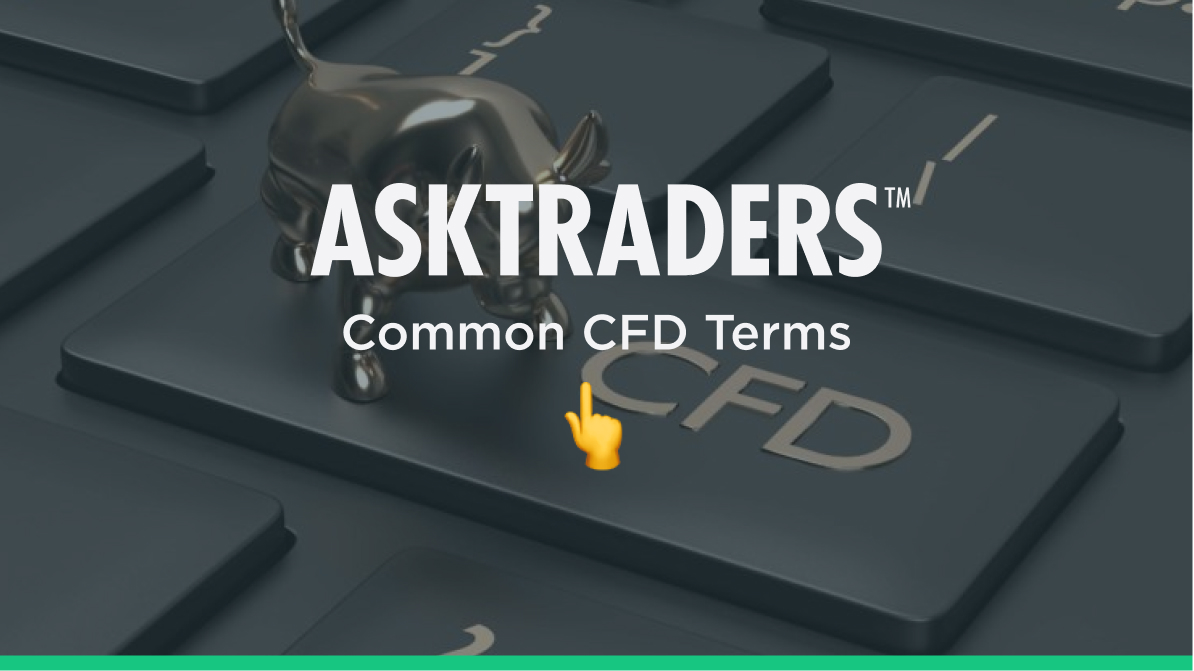With CFDs continuing to grow in popularity, even more people are getting on board. There are some terms used in CFD circles that can help you on your way. Some will be familiar and others less so.
YOUR CAPITAL IS AT RISK

It is important to understand that CFDs are complex financial products – ones that that significant experience and knowledge to comprehend. This basic CFD glossary will cover most of the terms associated with CFDs and cut through any jargon.
Table of contents
CFDs
CFD itself stands for contract for difference. It is a relative recent addition to the trading scene in relation to other traditional and mature products. Essentially, a CFD is a contract based on an exchange relating to the difference in value of a particular financial market or asset over a certain period. Where it differs from traditional stock trading is that the equivalent trade occurs without a physical purchase or sale.
This means that a CFD is a derivative like more mature financial instruments such as options and futures, but it differs in that the trader never owns the underlying asset at any point in the proceedings. The trader can open a CFD account without having to pay the full contract value, making it a truly leveraged product.
Many CFD traders use an online platform to make their trades. and essentially, this just means using software to makes deal over the Internet.
CFD Trade Terms
To make a CFD trade, the trader needs to take a position, and this means deciding whether a price is likely to go up or down. A long position means that upon buying into a market or asset, the price should rise. To go short is to expect the price to fall. Taking either option means the opening of a CFD position, and therefore, the trader has exposure to the market until that position closes.
There are various automated tools that can help new traders and experienced investors alike. A new order automatically opens a position if the chosen market reaches a price level specified in advance. If the market does not reach that level, then the position will not open.
The ask price, sometimes known as the offer price, is the value at which it is possible to buy a market and is the upper end of the spread. The price at which a trader can sell a market is the lower end of the spread and is known as the bid price.
Closing a position means ending the exposure of a CFD, at which time the trader can realise the profit or loss made on taking the position. A CFD position's contract value represents the full cost of the equivalent physical purchase or sale of the underlying asset. Therefore, 1,000 CFDs in asset X with a price of 160p would result in a contract value of 1,000 x 160p, or £1600.
A CFD can have a defined expiry set that will specify the date and time at which it will automatically close and settle. Another advantage that a CFD has over other derivatives such as futures and options is that a position can extend, or traders can use a rolling contract that has no set expiry.
Further to this, a rolling daily position will stay open and cross from one trading day to the next. However, this can result in the holding of a debit or credit overnight for every day of the position.
CFD Value Terms
The gap between a bid price and an offer price is known as the spread, and the smaller it is, the lower the cost of trading in a particular market will be. This should not be confused with spread betting, which is a separate from of so-called margin trading.
Forex markets are very popular for making CFD trades. and in these cases, a single price unit is known as a pip. Any profit or loss on a trade is ultimately determined by the change in pips multiplied by the unit stake. When it comes to non-forex CFD markets, one unit of the price is known as a point. Once again, the profit or loss after closing a position is determined by the change in points multiplied by the unit stake.
CFD Leverage and Gearing
As CFDs offer the chance to trade a position without having to pay the full contract value in advance, they are a form of leveraged trading. This ability to gain exposure to a market without paying the full contract value is known as trading on margin. As an example, opening a position with a value of £10,000 and making a margin deposit of £1,000 means that there is leverage (or gearing) ratio of 10:1.
The advantages of this are obvious, but there are also pitfalls and dangers. A limit order is a tool that is part of a risk management strategy to close a position if the market reaches a certain point and automatically closes it at a given level.
A stop-loss order also closes a position automatically when the price hits a specified level to minimise losses, although in certain volatile market conditions. it can be subject to gapping and slippage. A trailing stop is a special stop-loss order that traders can use to lock in a profit on successful positions as the level moves automatically by set increments when movement is in their favour. When the market turns, this order takes on the same process as a normal stop to close a position.
Final Thoughts
CFD trading does involve some terms and descriptors that might be unfamiliar. Opening a CFD account is far more straightforward and subject to fewer regulations than many other forms of trading on the markets. It really is no surprise that this particular financial instrument is gaining in popularity all the time.
PEOPLE WHO READ THIS ALSO VIEWED:










